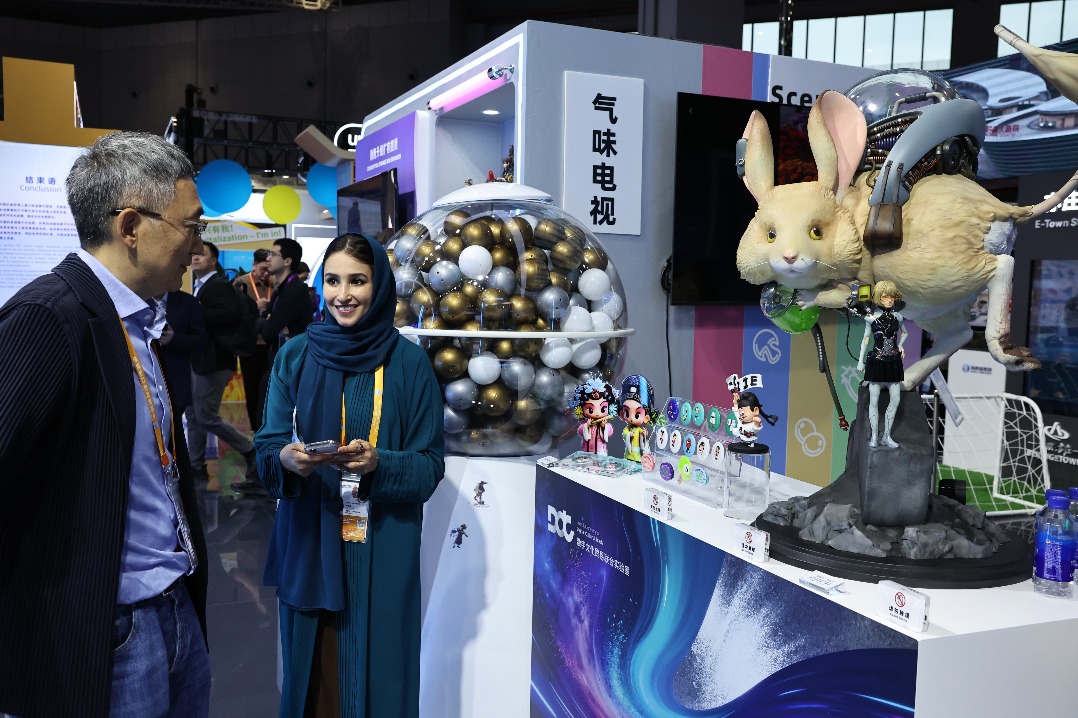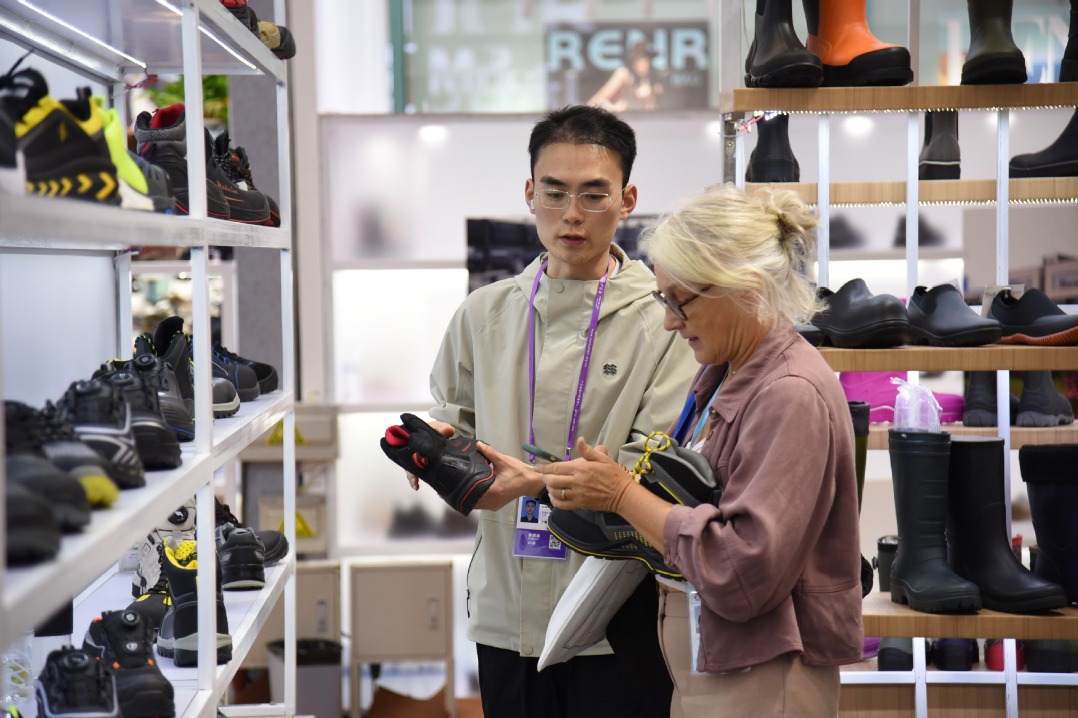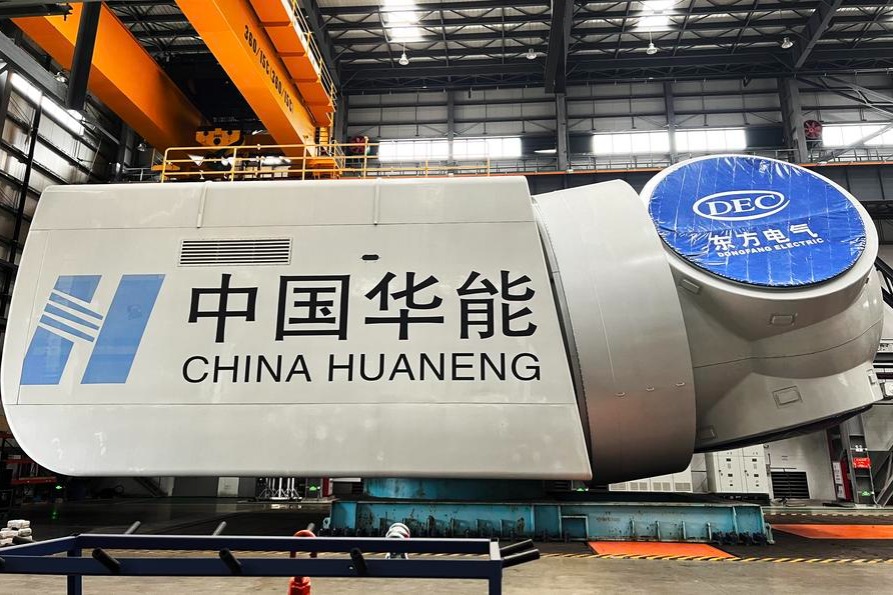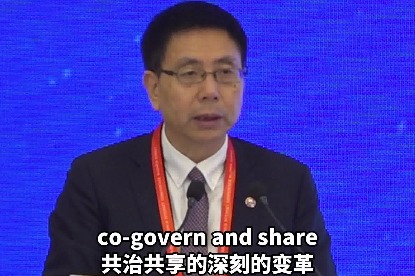Cryogenic industry has expertise down cold


Proprietary equipment exported, boon to clean energy
Editor's note: China aims to nurture 10,000 "little giants" from 2021 to 2025 amid an ambitious plan to trigger the vitality of small and medium-sized enterprises in its sprawling industrial economy. "Little giants" typically specialize in niche sectors, command high market shares and boast strong innovative capacity. To be termed a "little giant", a Chinese firm must see a minimum 5 percent year-on-year average growth rate of its main business income or net profit in the past two years. More importantly, it must have two valid invention patents or other similar proof of its innovation capabilities, and at least 3 percent of its top line must be dedicated to R&D, among other financial and operational criteria. China Daily explores how they help the world's second largest economy stabilize its industrial and supply chains, navigate headwinds from the COVID-19 pandemic and achieve breakthroughs in technology bottlenecks.
China's cryogenic industry stepped onto a new stage early this year, when a crane slowly loaded a specialized helium refrigerator onto a container headed for Canada during a launching ceremony in Zhongshan, Guangdong province.
The high-powered, 10-kilowatt refrigerator, which can reach -253.15 C, made its developer, Beijing Sinoscience Fullcryo Technology Co Ltd, the nation's first company to export fully self-developed, large cryogenic equipment able to reach such low temperatures, and more importantly, capable of being used for hydrogen liquefaction.
"China used to rely on imported equipment to generate liquefied hydrogen because domestically produced facilities hit bottlenecks when trying to reach the low temperatures required," said Zhu Cheng, vice-president of the Beijing-based company.
"Now, our fully self-developed helium refrigerators can provide not only the low temperatures required for liquefied hydrogen production, but also even lower temperatures, filling gaps in the gas industry chain and laying a solid foundation for more advanced cryogenic technologies in future research and development," Zhu said.
For hydrogen to exist in liquid form at atmospheric pressure, it must be cooled below the critical point of around -253.15 C, which poses a great challenge to producing cryogenic equipment.
Hydrogen was not emphasized as much in the past since its uses were limited-mainly restricted to industries such as space and aviation sectors. However, of late, hydrogen's potential as a clean and renewable energy source to reduce carbon emissions and abate climate change has been recognized worldwide. Hydrogen's liquefied form has also garnered wide attention due to advantages in lower costs and higher efficiency, compared with its gaseous form, when it comes to storage, large-scale use and long-distance transportation, Zhu said.
"Without the need to build pipes, it is relatively cheaper and safer to move hydrogen in a liquid than in a gaseous state, even though nearly all transmission methods remain expensive at present," said Lin Boqiang, dean of the China Institute for Studies in Energy Policy at Xiamen University.
"The hydrogen industry is still at its initial stage in China, but its essential and irreplaceable role in clean energy has pushed forward national planning for its industrial use," Lin added.
In March, the National Development and Reform Commission and the National Energy Administration jointly released China's first medium to long-term plan (2021-35) for the hydrogen industry's development, positioning hydrogen as an indispensable part of the country's future energy structure and the hydrogen industry a key field to be further explored.
By 2025, China intends to greatly improve its hydrogen innovation capability and generally secure core R&D and manufacturing technologies, in order to achieve the initial establishment of a relatively complete supply chain and industrial system for hydrogen, according to the plan.
"Hydrogen energy remains at the core of China's dual carbon goals, which aim to peak carbon dioxide emissions by 2030 and achieve carbon neutrality by 2060. To fully implement China's decarbonization roadmap and respond to industrial transformation and the energy revolution, it is crucial to make hydrogen a pervasive energy source that can be applied extensively," Zhu said. "Thus, crucial to the hydrogen supply is making its transportation easier and its price lower, and, above all, creating the means for its long-distance transportation. This can be better achieved by having it in a liquid state," Zhu said.
To make liquefied hydrogen, it is important to research and develop its production, transport and usage in a series of conditions and scenarios, among which the process of liquefaction and the necessary cryogenic equipment play the most crucial part, he added.
In lowering the temperature, each drop of one degree is seen as an achievement in cryogenic technology, given that different low-temperature ranges can induce different chemical reactions, Zhu said.
Fullcryo had already developed helium refrigerator models that could reach the low temperatures required to produce liquefied oxygen and liquefied nitrogen, neither of which is as low as those needed to liquefy hydrogen. Thus, the model it developed to reach liquefied hydrogen's temperature range marks another significant step in accelerating the nation's efforts to ensure a safe and stable gas supply, company officials said.
Zhu credits the devotion of its scientists and their hard work. "At first, cryogenic technology was a niche topic with scant interest. Our company was founded on precious research and studies led by the pioneering academicians at the Chinese Academy of Sciences, which were further developed by the next four generations of scientists," he said.
"It was this relay of knowledge and endeavor that supported us in breaking the technical bottlenecks and attaining full independence and full intellectual property rights for all of our models.
"It has always been and will continue to be our primary goal to explore lower temperatures and the magic they bring about," he added.
Fullcryo is working to meet not only domestic but also global gas needs, company officials said. In terms of cryogenic equipment for export, the company's production capacity enables it to reduce the average manufacturing cycle to half of that of its foreign counterparts at a lower price, the company said. It aims to provide more cost-effective and high-quality choices for the global market, which officials hope will benefit customers worldwide.
Each unit of Fullcryo's largest helium refrigerator produces up to 5 metric tons of liquefied hydrogen a day. A 10-ton model is being designed and is expected to make its debut in the near future, officials said.
At that point, the processing cost of liquefied hydrogen per kilogram will be reduced and output increased, making the energy a more economical and environmentally friendly resource, Zhu said.



































